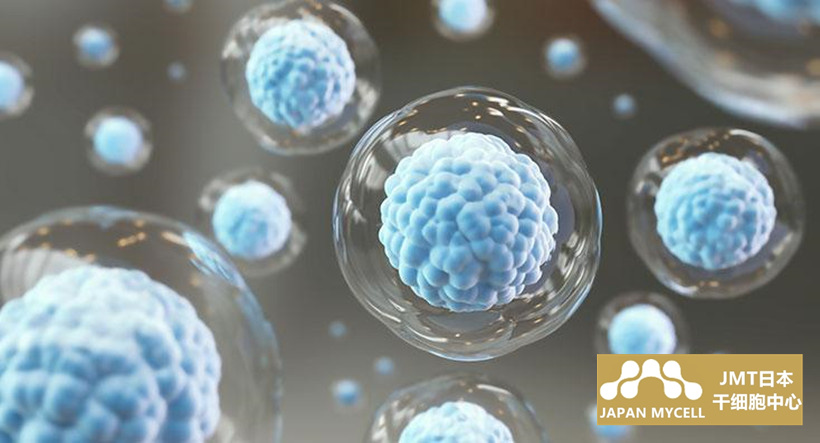
慢性疼痛治疗
高度な再生医療が健康に役割を果たすようにしましょう
日期:2021-05-31 11:46作者:admin
后饭塚僚
东京理科大学 生物医学科学研究所 发生与衰老研究室

脾间充质细胞在髓外造血中的作用
我们以脾脏器官形成所必需的转录因子Tlx1的表达为指标,研究脾间充质细胞的发育,分化和功能。迄今为止,
1)表达Tlx1的细胞已定位于脾中枢动脉周围的血管周围细胞和卵泡,纤维状网状细胞,滤泡状树突状细胞和边缘性网状细胞周围的红色脾脊髓区域。与成熟的网状细胞的数量不同,例如[13]
2)表达成年Tlx1的细胞具有分化成成熟的间充质细胞(如纤维状网状细胞,滤泡树突状细胞和边缘间充质细胞)的能力,以及3)骨髓(如PDGFRα,CD105和Sca-1)的能力。表达细胞是脾的间充质基质细胞,因为它们表达的表面标志物与间充质基质细胞相似,并且具有分化为脂肪细胞,成骨细胞和软骨细胞的能力。由于有报道说造血干细胞位于脾的成骨细胞区域[8],因此研究了造血位与脾脏中表达Tlx1的细胞之间的关系,并参与了造血干细胞的定位和维持。
CXCL12和SCF高度表达,并且在这些细胞中过表达Tlx1时,在骨髓和外周血中未观察到血细胞变化,但观察到脾脏中造血干/前体细胞增加的红细胞和骨髓造血功能的增加,强烈提示在应激性造血过程中,表达Tlx1的细胞可能在脾脏中充当髓外造血位。
[前景]
造血干细胞的移植对于治疗骨髓增生异常综合症,免疫缺陷和凝血异常等造血疾病是必不可少的,但目前,没有在维持造血干细胞的功能(自我更新能力,多能性)的同时可以使其大量增殖的培养系统。近年来,已经开发了通过在体内形成骨骼和骨髓样结构并在体外培养来复制造血系统的系统,但是该系统具有数量限制,并且从使用硬组织骨骼中这一点来看也是不现实的。
尽管很难大量采集和制备存在于骨腔中的骨髓间充质基质细胞,但脾脏间充质基质细胞却很容易采集和制备,并且有可能采集和制备脾的髓外造血细胞。一旦阐明了细胞学特性,就有可能为造血干细胞构建替代骨髓的大规模培养系统。此外,如果建立了这样的系统,它将被应用于包括造血生态位的药物的造血系统。
它不仅有望作为评估毒性和功效的系统,而且还可以用作新型造血剂的高通量筛选系统。将来,通过阐明涉及骨髓和脾中造血干细胞的维持和功能的间充质基质细胞的共性和特殊性,并阐明可以起造血功能的微环境成分的共同原理,希望其可以与如上所述的应用展开紧密相连。
引用文献
[1] Bernardo, M.E. and Fibbe, W.E. 2013.Mesenchymal stromal cells: sensors and switchers of inflammation. Cell Stem Cell 13:392-402.
[2] da Silva Meirelles, L., Chagastelles, P.C. and Nardi, N.B. 2006. Mesenchymal stem cells reside in virtually all post-natal organs and tissues. J. Cell Sci. 119: 2204-2213.
[3] Ding, L. and Morrison, S.J. 2013. Haematopoietic stem cells and early lymphoid progenitors occupy distinct bone marrow niches. Nature 495: 231-235.
[4] Feng, J., Mantesso, A., De Bari, C., Nishiyama, A. and Sharpe, P.T. 2011. Dual origin of mesenchymal stem cells contributing to organ growth and repair. Proc. Natl. Acad. Sci. U. S. A 108: 6503-6508.
[5] Friedenstein, A.J., Gorskaja, J.F. and Kulagina, N.N. 1976. Fibroblast precursors in normal and irradiated mouse hematopoietic organs. Exp.Hematol. 4: 267-274.
[6] Kalinina, N.I., Sysoeva, V.Y., Rubina, K.A.,Parfenova, Y.V. and Tkachuk, V.A. 2011.Mesenchymal stem cells in tissue growth and repair. Acta. Naturae 3: 30-37.
[7] Kfoury, Y.,. and Scadden, D.T. 2015. Mesenchymal cell contributions to the stem cell niche. Cell Stem Cell 16: 239-253.
[8] Kiel, M.J., Yilmaz, O.H., Iwashita, T., Terhorst, C. and Morrison, S.J. 2005. SLAM family receptors distinguish hematopoietic stem and progenitor cells and reveal endothelial niches for stem cells. Cell 121: 1109-1121.
[9] Kim, C.H. 2010. Homeostatic and pathogenic extramedullary hematopoiesis. J. Blood Med. 1:13-19.
[10] Mebius, R.E. and Kraal, G. 2005. Structure and function of the spleen. Nat. Rev. Immunol. 5:606-616.
[11] Morikawa, S., Mabuchi, Y., Kubota, Y., Nagai, Y., Niibe, K., Hiratsu, E., Suzuki, S., MiyauchiHara, C.,Nagoshi, N., Sunabori, T., et al. 2009.Prospective identification, isolation, and systemic transplantation of multipotent mesenchymal stem cells in murine bone marrow. J. Exp. Med. 206: 2483-2496.
[12] Morrison, S.J. and Scadden, D.T. 2014. The bone marrow niche for haematopoietic stem cells. Nature 505: 27-334.
[13] Nakahara, R., Kawai, Y., Oda, A., Nishimura, M.,Murakami, A., Azuma, T., Kaifu, T. and Goitsuka,
R. 2014. Generation of a Tlx1 (CreER-Venus) knock-in mouse strain for the study of spleen development. Genesis 52: 916-923.
[14] Omatsu, Y., Sugiyama, T., Kohara, H., Kondoh, G., Fujii, N., Kohno, K. and Nagasawa, T. 2010. The essential functions of adipo-osteogenic progenitors as the hematopoietic stem and progenitor cell niche. Immunity 33: 387-399.
[15] Sugiyama, T., Kohara, H., Noda, M. and Nagasawa,T. 2006. Maintenance of the hematopoietic stem cell pool by CXCL12-CXCR4 chemokine signaling in bone marrow stromal cell niches.Immunity 25: 977-988.
[16] Zhou, B.O., Yue, R., Murphy, M.M., Peyer, J.G. and Morrison, S.J. 2014. Leptin-receptor-expressing mesenchymal stromal cells represent the main source of bone formed by adult bone marrow.Cell Stem Cell 15: 154-168.
Abstract
Extramedullary hematopoiesis refers to the differentiation of hematopoietic stem/progenitor cells(HSPCs)outside the bone marrow, which occurs in the spleen as well as in the liver, usually in association with pathophysiological conditions, such as myelofibrosis, hemolytic anemia and bacterial infections. Compared to the accumulating knowledge on the mesenchymal stromal cells(MSCs)constituting the niche for intramedullary hematopoiesis, almost nothing is known about MSCs in the extramedullary niche for hematopoiesis. We have demonstrated that perifollicular MSCs phenotypically resembling mesenchymal progenitors in the postnatal spleen express a transcription factor Tlx1 that is essential for spleen organogenesis. Here we summarize the properties and functions of MSCs supporting the maintenance of the HSPCs in the bone marrow and spleen, and further discuss the potential application of MSCs derived from the postnatal spleen to the therapy of hematological diseases.
Key words: Mesenchymal stromal cells, extramedullary hematopoiesis, spleen, Microenvironment,niche

服务热线:400-161-8586
日本医疗观光株式会社运营日本:东京中央区日本橋大伝馬町10-1 柿原林業ビル2F
中国:江苏省苏州市工业园区广运国际金融中心408